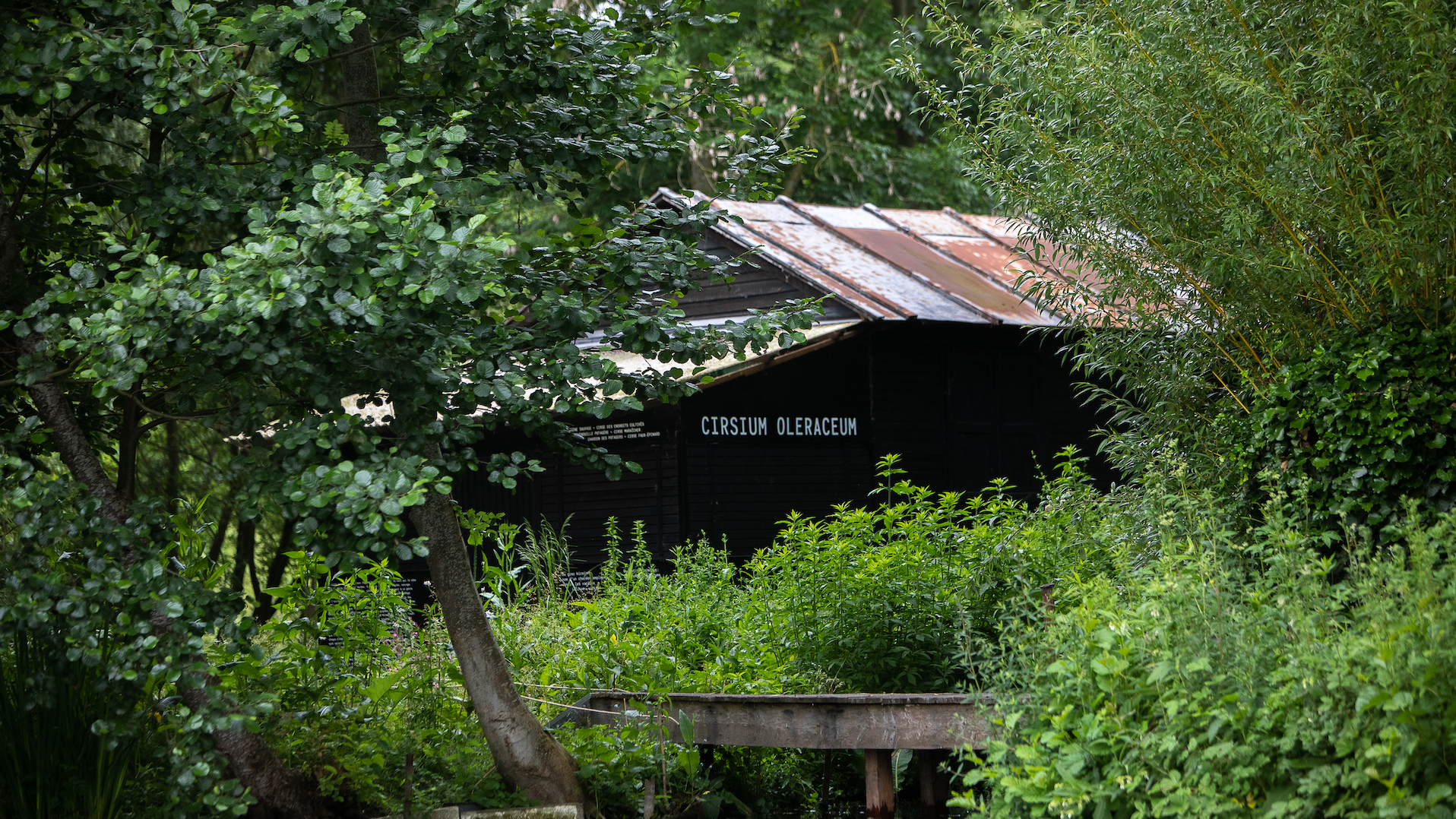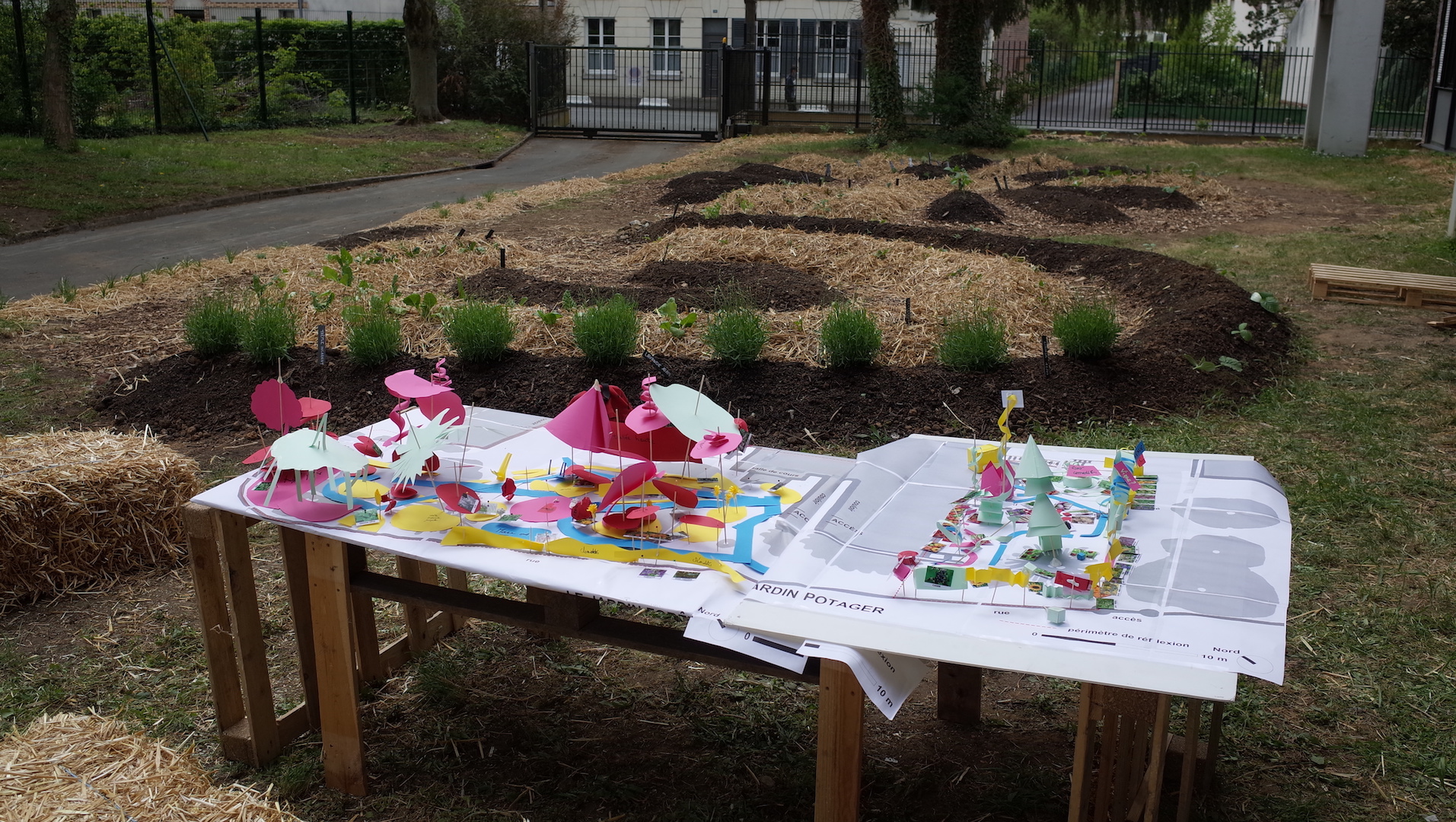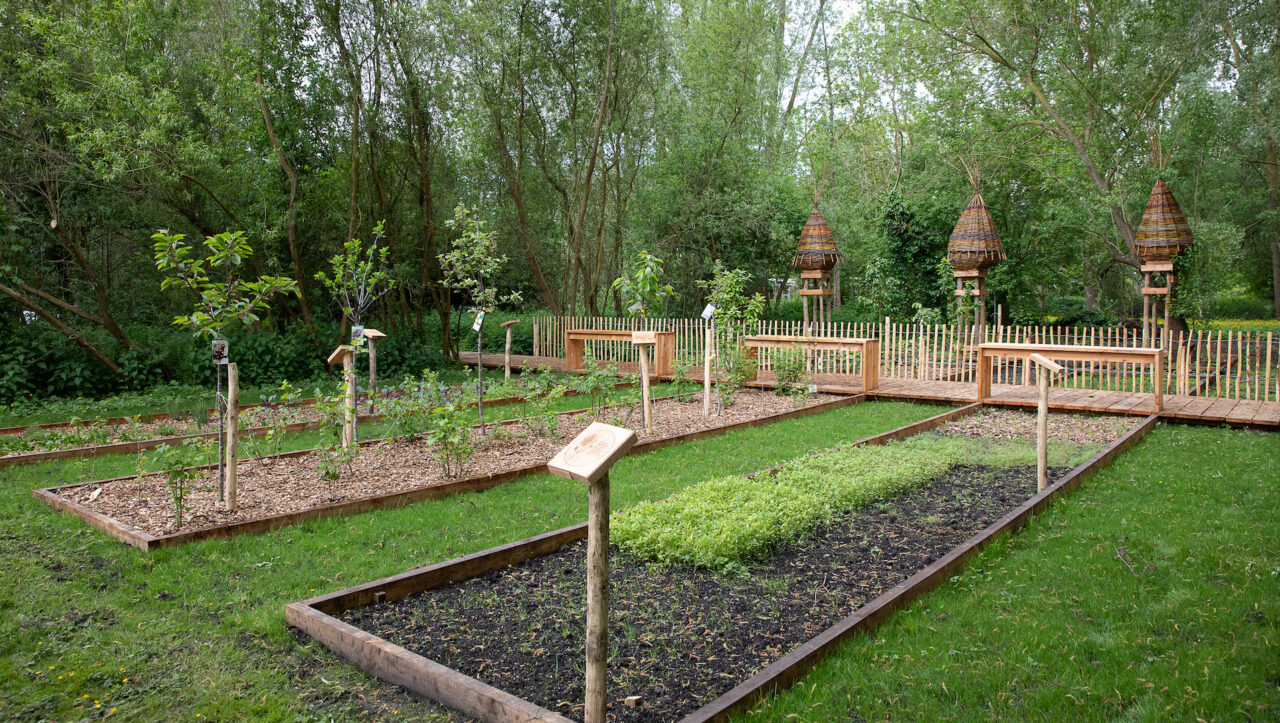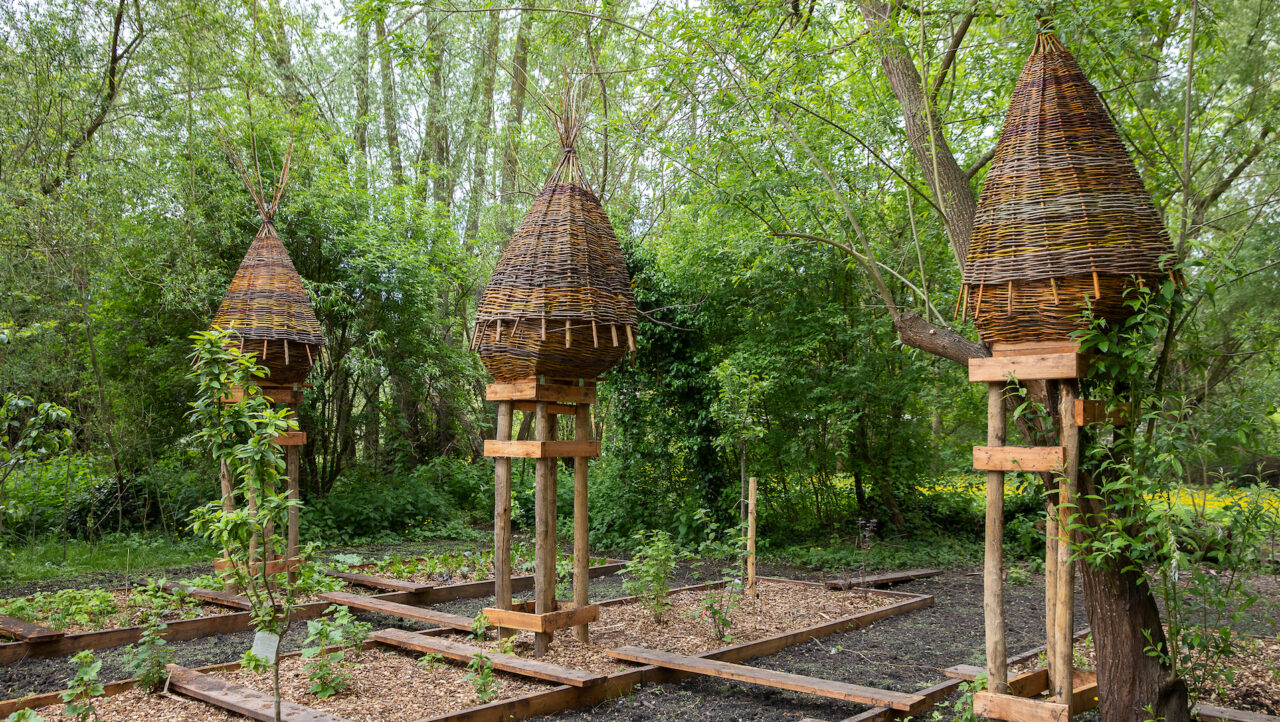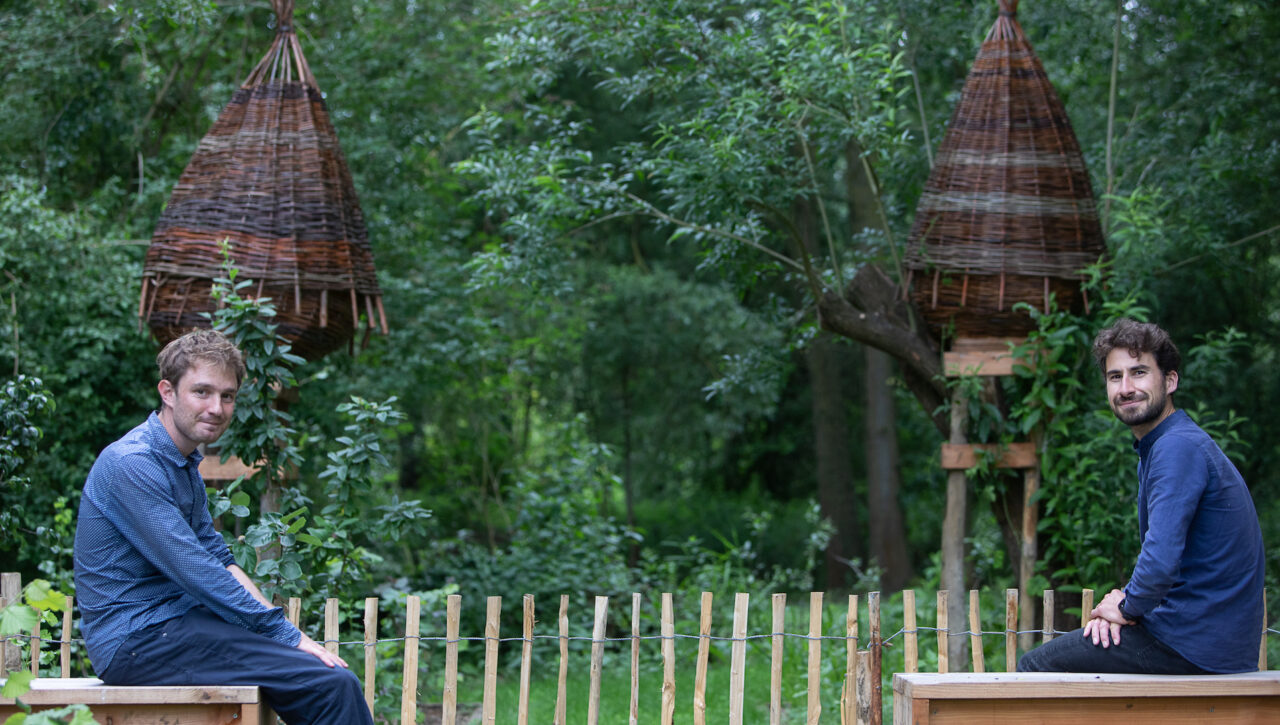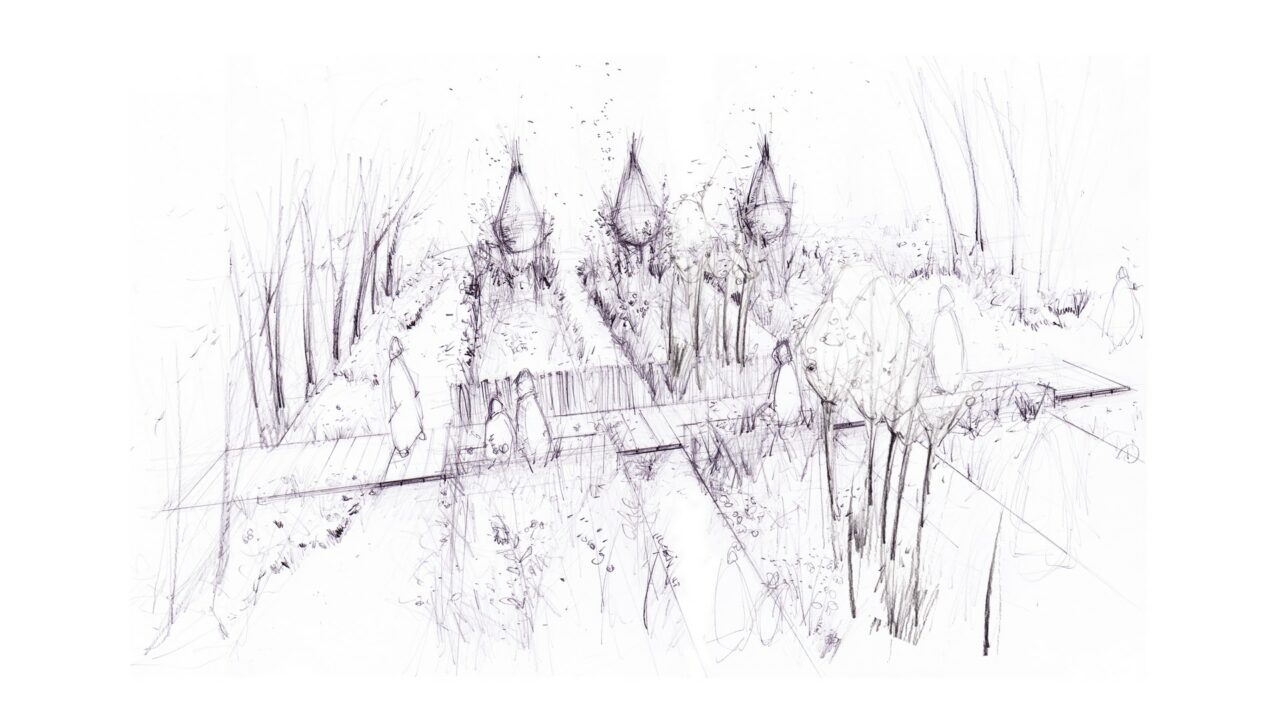Bees roam an area of up to 3 kilometres collecting pollen and nectar from the flowers they feed on. The survival and well-being of a bee colony, like many other pollinating insects, depends on the ecological and agricultural diversity of the immediate environment. If we look at 3 kilometres around the Hortillonnages this diversity can be found: a renowned market garden, large cereal crops around Amiens and a few fruit trees scattered here and there in the mosaic of the market gardeners and the allotments.
The approach of the landscapers is to make the garden a repository of the varietal richness present 3 kilometres around their garden. The garden resonates and enters into dialogue with its surroundings thanks to the foraging power of bees. It becomes a privileged place to collect the various pollens and nectars that can be found in the Hortillonnages.
Since time immemorial the quality of pollination by the bees has improved the reproduction of the plants that nourish us. Some become tastier or more fertile others are sweeter or have a higher level and more qualitative oil content. It is therefore a story of co-evolution that is woven into this trio of Man / Bees / Production. It is this relationship of interdependence that is depicted and emphasised in this garden to focus the attention of the public on it.
Three main themes of production are illustrated here, in three lines that echo the garden motif: field crops, fruit trees and market gardening.
The three woven willow hives inserted within these three lines are positioned as guardians and guarantors of these rows, symbols of the food production that nourishes us.
The willow, a common plant in the Hortillonnages, becomes a motif for building and supporting these refuges for life.
The central deck is the symmetrical line separating the inaccessible area occupied by the beehives from the rest of the garden. This central line acts like a point of geometric and mental reflection on this interdependence and complementarity: Bees / Man / Food.
The staging of the garden questions the importance of the agricultural diversity present in the 3 kilometres around, and therefore, questions us about the survival of bees and of our self- sufficiency.


